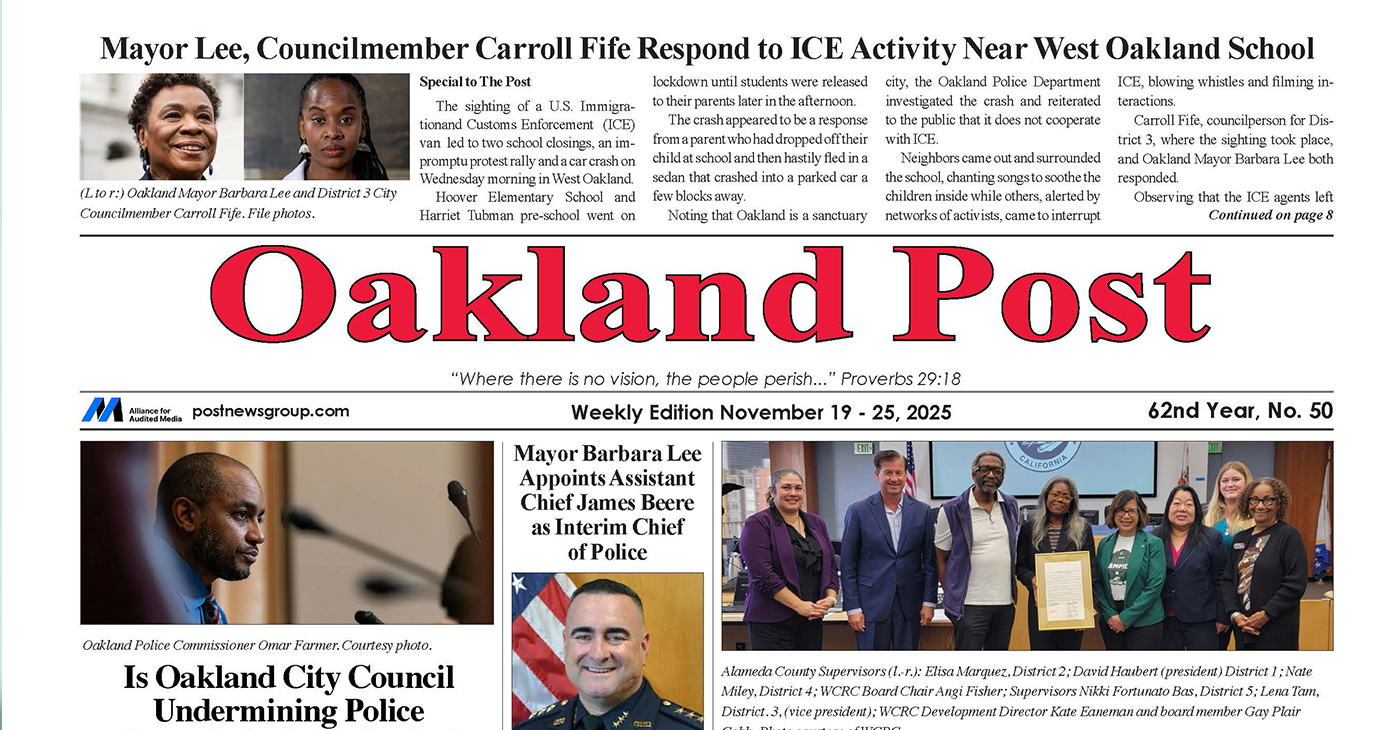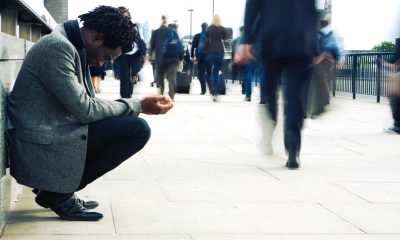Commentary
COMMENTARY: Is Baltimore City Broken?
THE AFRO — Between Baltimore City and the rest of the world, there is always a hint of an unasked and therefore unanswered question. It is a question that is rooted in anti blackness and framed by years of deliberate Black oppression and suppression. It is a question that is difficult to ask of a city that seems to move from one scandal to the next, without pausing for a moment to catch its collective breath.
By Karsonya Wise Whitehead
Between Baltimore City and the rest of the world, there is always a hint of an unasked and therefore unanswered question. It is a question that is rooted in anti blackness and framed by years of deliberate Black oppression and suppression. It is a question that is difficult to ask of a city that seems to move from one scandal to the next, without pausing for a moment to catch its collective breath.
Outsiders look at us with a wary eye, head cocked, with the question ready on their lips. They are not sure of how to frame it, how to ask it without making us angry. They do not seem to understand that the very same question that they are afraid to ask is the same one that we ask, of both our politicians and of ourselves, all of the time: Is Baltimore (our beloved city) broken beyond repair? We are a city full of dreamers, and we want (no, we deserve) to be seen and treated better. We are, as Robert Browning once wrote, “a place where we desire for our collective reach to exceed our collective grasp.”
I think deeply about Baltimore City, about who we are and what we can become. I read our history and the stories about our city with one eye closed. This is an old lesson for me, one learned when I was in college, living abroad in Kenya with a blind woman near Mount Mtelo. She knew that I was a history major and she told me that I should always read the White man’s version of my history with one eye closed. Because, until the day comes when the hunted learn how to write, the stories would always lift up and center the hunters.
Stories and articles about Baltimore City, our neighborhoods and our residents, should be read with one eye closed. I remember this lesson fondly, and it is one of the reasons why I chose to conduct an in-depth ethnographic study of Baltimore’s most economically challenged, hypersegregated neighborhoods. I wanted to write, record and tell the stories of the people who live and reside on the margins of the margins. They are the most vulnerable and their stories need to be told and centered. I think of the words of my colleague, Treva Lindsey, who said that White supremacy does not love us; therefore, we need to learn to love and love on each other hard. This is what my act of radical political love looks like—a little bit of hope being passed from one hand and heart to the next by telling their stories, hearing them speak, bearing witness to their pain, and believing out loud with them and in their story.
Last week, I hosted a Teen Summit at the Academy of College and Career Exploration (it is located in the Hampden area, but the students come from South and East Baltimore), and I asked them, was Baltimore City, the place that they call home, broken beyond repair.? This was my second conversation with them, and they had spent some time between my visits, thinking about Baltimore and about who they wanted to be in the world. De’Shawn spoke first and was clear in his assertion that Baltimore City is broken but not beyond repair: “We just need a lot of help, and we need those who are supposed to help to do the work and fix it,” he said.Tiaja chimed in and said that the problem is that the entire city is dangerous. “People are getting stabbed inside the schools,” she said, “and then you can be in the wrong place at any time in this city and get shot. The people who are supposed to save us and protect us, are not doing their job.” They were just getting warmed up. “It is dangerous.” “It is broken.” “They don’t care about us, they never did.” Shanaya spoke up, “But we care about us, and we can repair it,” she said. We spent the next hour talking through the issues that this city is facing, from the state of the schools to community violence, from the mayor to the police force. I heard them. I saw them, and when I was packing up to go, Amir came over to me and said, “The first time you came I didn’t think anything was going to change because we talk about the problems all of the time; but you made us feel like we could change it. I don’t remember what you said, but it’s like you gave us hope.”
Karsonya Wise Whitehead is the #blackmommyactivist and an associate professor of communication and African and African American studies at Loyola University Maryland. She is the host of “Today With Dr. Kaye” on WEAA 88.9 FM and the author of the forthcoming “The Soul of (My) Black Boys.” She lives in Baltimore City with her husband and their two sons.
The opinions on this page are those of the writers and not necessarily those of the AFRO.
Send letters to The Afro-American • 1531 S. Edgewood St. Baltimore, MD 21227 or fax to 1-877-570-9297 or e-mail to editor@afro.com.
This article originally appeared in The Afro.
Alameda County
Seth Curry Makes Impressive Debut with the Golden State Warriors
Seth looked comfortable in his new uniform, seamlessly fitting into the Warriors’ offensive and defensive system. He finished the night with an impressive 14 points, becoming one of the team’s top scorers for the game. Seth’s points came in a variety of ways – floaters, spot-up three-pointers, mid-range jumpers, and a handful of aggressive drives that kept the Oklahoma City Thunder defense on its heels.

By Y’Anad Burrell
Tuesday night was anything but ordinary for fans in San Francisco as Seth Curry made his highly anticipated debut as a new member of the Golden State Warriors. Seth didn’t disappoint, delivering a performance that not only showcased his scoring ability but also demonstrated his added value to the team.
At 35, the 12-year NBA veteran on Monday signed a contract to play with the Warriors for the rest of the season.
Seth looked comfortable in his new uniform, seamlessly fitting into the Warriors’ offensive and defensive system. He finished the night with an impressive 14 points, becoming one of the team’s top scorers for the game. Seth’s points came in a variety of ways – floaters, spot-up three-pointers, mid-range jumpers, and a handful of aggressive drives that kept the Oklahoma City Thunder defense on its heels.
One of the most memorable moments of the evening came before Seth even scored his first points. As he checked into the game, the Chase Center erupted into applause, with fans rising to their feet to give the newest Warrior a standing ovation.
The crowd’s reaction was a testament not only to Seth’s reputation as a sharpshooter but also to the excitement he brings to the Warriors. It was clear that fans quickly embraced Seth as one of their own, eager to see what he could bring to the team’s championship aspirations.
Warriors’ superstar Steph Curry – Seth’s brother – did not play due to an injury. One could only imagine what it would be like if the Curry brothers were on the court together. Magic in the making.
Seth’s debut proved to be a turning point for the Warriors. Not only did he contribute on the scoreboard, but he also brought a sense of confidence and composure to the floor.
While their loss last night, OKC 124 – GSW 112, Seth’s impact was a game-changer and there’s more yet to come. Beyond statistics, it was clear that Seth’s presence elevated the team’s performance, giving the Warriors a new force as they look to make a deep playoff run.
Activism
Oakland Post: Week of November 26 – December 2, 2025
The printed Weekly Edition of the Oakland Post: Week of November 26 – December 2, 2025

To enlarge your view of this issue, use the slider, magnifying glass icon or full page icon in the lower right corner of the browser window.
Activism
Oakland Post: Week of November 19 – 25, 2025
The printed Weekly Edition of the Oakland Post: Week of November 19 – 25, 2025

To enlarge your view of this issue, use the slider, magnifying glass icon or full page icon in the lower right corner of the browser window.
-

 Activism3 weeks ago
Activism3 weeks agoOakland Post: Week of November 12 – 18, 2025
-

 Activism4 weeks ago
Activism4 weeks agoOakland Post: Week of November 5 – 11, 2025
-

 Activism2 weeks ago
Activism2 weeks agoIN MEMORIAM: William ‘Bill’ Patterson, 94
-

 Activism3 weeks ago
Activism3 weeks agoHow Charles R. Drew University Navigated More Than $20 Million in Fed Cuts – Still Prioritizing Students and Community Health
-

 #NNPA BlackPress3 weeks ago
#NNPA BlackPress3 weeks agoThe Perfumed Hand of Hypocrisy: Trump Hosted Former Terror Suspect While America Condemns a Muslim Mayor
-

 Bay Area3 weeks ago
Bay Area3 weeks agoNo Justice in the Justice System
-

 #NNPA BlackPress3 weeks ago
#NNPA BlackPress3 weeks agoProtecting Pedophiles: The GOP’s Warped Crusade Against Its Own Lies
-

 #NNPA BlackPress2 weeks ago
#NNPA BlackPress2 weeks agoTrump’s Death Threat Rhetoric Sends Nation into Crisis

























































